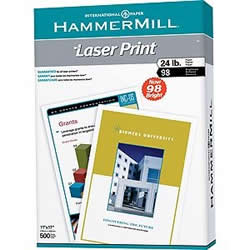Tappi Versus Iso Brightness Scale
| Products & Pricing ->Custom-Made Frames ->Resources |
Jun 26, 2015 The 0-100 scale is typically based on the Technical Association of the Pulp and Paper Industry’s TAPPI Standard T451. Regions outside North America commonly use the International Organization for Standardization’s ISO Standard 2469. As mentioned above, the standard for Whiteness measurement is CIE Whiteness.
| Wood Frames | Metal Frames | Mat Boards | Adv. Search | :: Resources :: |

- This brightness measurement is most common in the United States, and is the one described in TAPPI T 452 'Brightness of Pulp, Paper, and Paperboard (Directional Reflectance at 457 nm).' In Canada, Europe, and South America, Elrepho or ISO brightness is more commonly used.
- Some papers have a brightness of greater than 100. This is possible because there are two basic types of brightness measurement scales: The TAPPI (GE) scale used in the United States, which uses a directional light source, and the ISO and D65 scales, which use a diffuse source to measure brightness. There is no correlation between.
- Paper Brightness 'Brightness' refers to a specific measure of how much light a sheet of paper reflects. Uses the GE/Tappi scale and is a different brightness measurement system than the International scale. The comparison scale below, along with the new brightness icon, will guide you through the different numbers.
|
|
|
|
|
| ||||||||||||||||||||||||
| ALL ABOUT PAPER BRIGHTNESS |
| The terms 'brightness' and 'whiteness' are often used interchangeably when considering paper. While for the regular layperson this crossover may not be detrimental, it is an important differentiation for those involved in the printing and art realms. Amnesia: the dark descent download free. Brightness is the measure of the amount of blue light reflected off a sheet of paper. Essentially the volume of light. Whiteness is the measure of the amount of all light reflected off a sheet of paper. Essentially the quality of light. This article will deal with paper brightness; what it is, how it is determined, and how it affects print quality. To read more, see our All About Whiteness article. |
SUMMARY
|
| WHAT IS BRIGHTNESS? |
| When measuring brightness, a light source is directed at the paper in question, and the amount of blue light reflected off the surface is recorded. The wavelength for blue light is 457 nanometers. The type of light source varies depending on the testing method used. These methods are discussed in the next section. Brightness measurements were first developed to test the results of bleaching wood pulp. The bleach removes the natural yellowish tint of the natural pulp, and the test would be able to determine the change before and after the process. Today, most papers - at least for printing - are bleached to some extent. The measurement is based on the percentage of light reflected back, based on a scale between 1 and 100%. The higher the percentage, the more blue light reflected by the paper, and the brighter it appears. Just because two different papers have the same brightness rating, however, does not mean they will appear the same color to the human eye. Since only one wavelength (color) of light is measured, brightness does not account for the amount of other wavelengths reflected off a paper. Two papers could reflect 87% of the blue wavelength, while one reflects 50% and the other reflects 80% of the red wavelength. OBAs In general, white papers have a brightness of between 60 and 90%. However, added optical brightening agents (OBAs) can raise this number considerably. This is why you may have come across a paper with a brightness above 100. This is not possible in a natural situation, where the paper is constructed solely of wood pulp. Once brighteners are added, however, UV light is reflected in addition to the other wavelengths. The UV light going to the paper is not visible to the human eye, but the brighteners transform it into visible light. Therefore, more visible light is reflected off the paper than was absorbed onto it, making it appear brighter. Since brightening agents haven't been around for too long, their stability and archival reliability is still uncertain. It is known they may fade over time, diminishing the perceived brightness of the paper. In addition to the percentage rating, brightness may also be identified by a name such as Ultra Bright or Very Bright. These 'ratings' are not standardized, however, and should not be used to compare papers. | Brightness is a paper specification
|
| PAPER BRIGHTNESS STANDARD TESTS |
Brightness is generally measured using one of three different tests. Unfortunately, these tests use such different criteria, it is difficult to reliably compare a paper with one test's rating to a paper with a different test's rating. TAPPI Brightness Test
ISO Brightness Test
D65 Brightness Test
Test Comparison
| TAPPI Brightness Test |
| HOW BRIGHTNESS AFFECTS THE PRINT |
Knowing the brightness of a sheet of printer paper doesn't do you much good if you don't know how that brightness will affect your printed image. These are some general guidelines, though external conditions will affect any print, so these are not hard and fast rules.
| Left to right: Photo Rag; German Etching; Enhanced Matte |
Tappi Versus Iso Brightness Scale Comparison
Tappi Versus Iso Brightness Scale Calibration
| At KeenART Media, we use a variety of different fine art and photographic papers. Visit our Fine Art Prints page to see the full list of papers we offer, and the Brightness rating for each paper. If you have questions about any of our fine art paper prints, or any of our other services or products, don't hesitate to contact us. Our knowledgeable staff is always happy to assist with answers, advice, or suggestions. |
